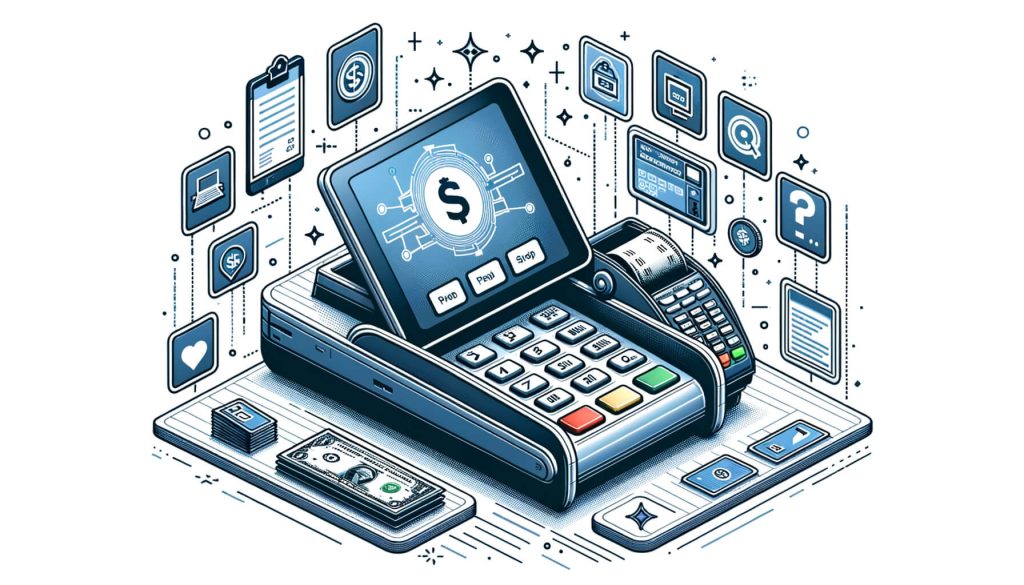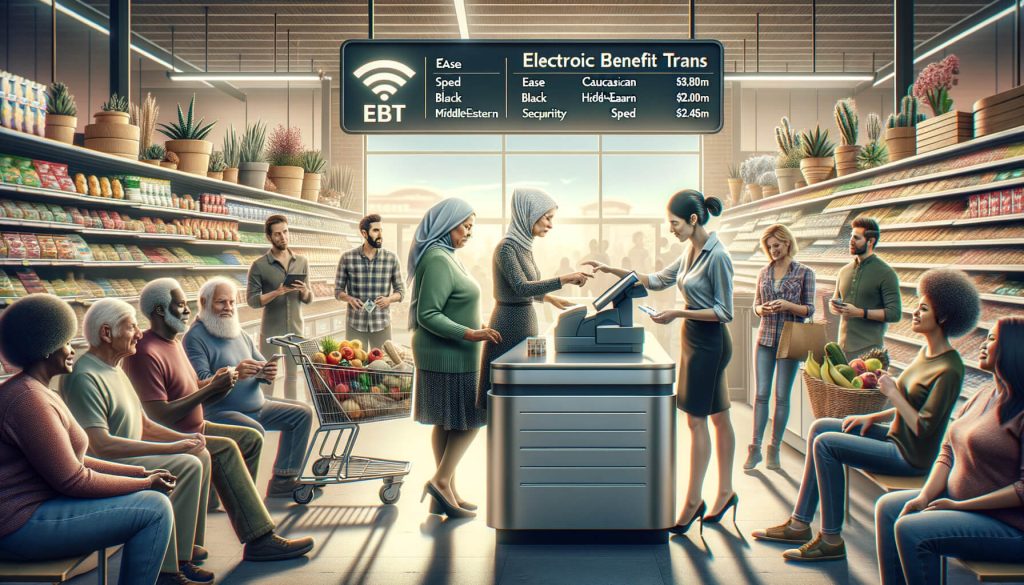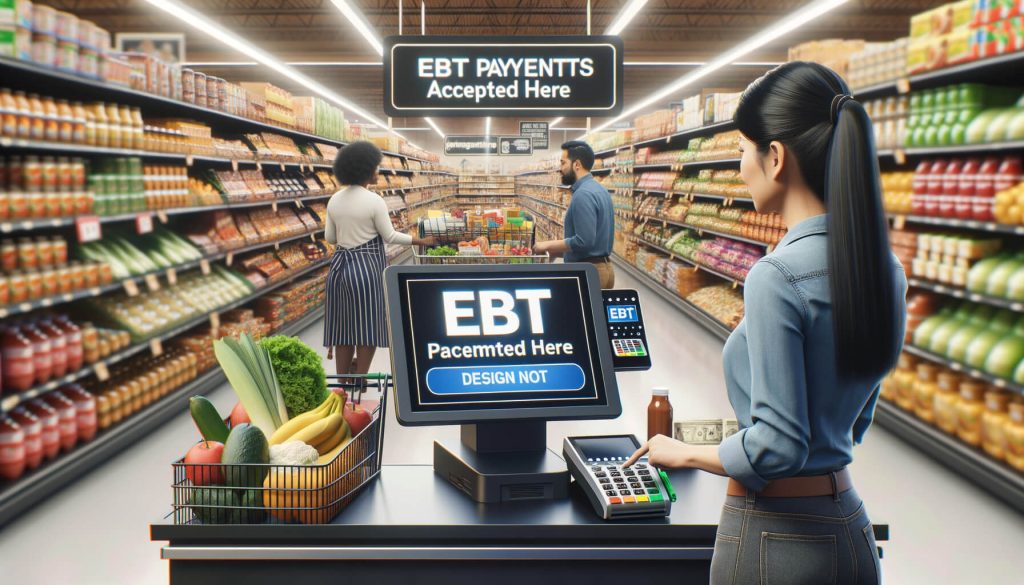In today’s modern world, technology has revolutionized the way we make payments. Electronic Benefit Transfer (EBT) is one such innovation that has transformed the way government assistance programs distribute benefits to eligible individuals and families. EBT payments are commonly used in grocery stores to provide a convenient and efficient way for recipients to purchase food and other essential items.
In this article, we will explore how Point of Sale (POS) systems support EBT payments in grocery stores, the benefits of using POS systems for EBT transactions, and the steps involved in setting up a POS system for EBT payments.
Understanding POS Systems and their Role in EBT Payments

A POS system is a combination of hardware and software that allows businesses to process transactions, manage inventory, and generate reports. In the context of EBT payments, a POS system plays a crucial role in facilitating the acceptance and processing of EBT transactions in grocery stores. It acts as a bridge between the customer’s EBT card and the store’s payment processing network, ensuring a seamless and secure transaction.
When a customer with an EBT card makes a purchase at a grocery store, the POS system is responsible for verifying the card’s validity, checking the available balance, and deducting the appropriate amount from the customer’s EBT account. The system also generates a receipt that shows the items purchased and the remaining balance on the EBT card. This integration of EBT payments into the POS system streamlines the checkout process and provides a user-friendly experience for both customers and store employees.
Benefits of Using POS Systems for EBT Payments

- Efficiency and Convenience: By integrating EBT payments into the POS system, grocery stores can offer a more efficient and convenient checkout experience for customers. The system automatically calculates the total amount of eligible items, deducts the payment from the EBT account, and generates a receipt, eliminating the need for manual calculations and reducing the chances of errors.
- Faster Checkout Times: With a POS system, the checkout process becomes faster and more streamlined. The system can quickly verify the EBT card, check the available balance, and process the transaction, reducing waiting times for customers and improving overall customer satisfaction.
- Accurate Reporting and Inventory Management: POS systems provide detailed reports on EBT transactions, allowing grocery store owners to track sales, monitor inventory levels, and make informed decisions about restocking. This data can also be used for financial analysis and tax purposes.
- Enhanced Security and Fraud Prevention: POS systems are equipped with advanced security features that help prevent fraud and unauthorized use of EBT cards. These systems use encryption technology to protect sensitive customer information and have built-in safeguards to detect and prevent fraudulent transactions.
- Compliance with Government Regulations: Using a POS system for EBT payments ensures that grocery stores comply with government regulations regarding the acceptance and processing of EBT transactions. These systems are designed to meet the specific requirements set by government agencies, ensuring that the benefits are used for eligible purchases only.
How POS Systems Ensure Security and Fraud Prevention in EBT Transactions

Security and fraud prevention are paramount when it comes to EBT transactions. Grocery stores must ensure that the funds on the EBT cards are used for eligible purchases and that the system is protected against unauthorized access and fraudulent activities. POS systems play a crucial role in ensuring the security and integrity of EBT transactions through various measures:
- Encryption Technology: POS systems use encryption technology to protect sensitive customer information, such as EBT card numbers and personal identification numbers (PINs). This ensures that the data transmitted during the transaction is secure and cannot be intercepted or tampered with.
- Secure Authentication: When a customer uses an EBT card at a grocery store, the POS system verifies the card’s authenticity by checking the card’s unique identification number and the associated PIN. This authentication process ensures that only authorized cardholders can make purchases using their EBT accounts.
- Fraud Detection and Prevention: POS systems are equipped with built-in fraud detection mechanisms that can identify suspicious transactions and flag them for further investigation. These systems can detect patterns of fraudulent activity, such as multiple transactions within a short period or purchases that exceed the card’s available balance.
- Compliance with Government Regulations: POS systems for EBT payments are designed to comply with government regulations and security standards. These systems undergo rigorous testing and certification processes to ensure that they meet the necessary security requirements set by government agencies.
- Training and Education: Grocery store employees who handle EBT transactions are trained on the proper use of POS systems and the importance of security and fraud prevention. They are educated on how to identify and report suspicious activities, ensuring that the system is used responsibly and securely.
Step-by-Step Guide: Setting up a POS System for EBT Payments in Grocery Stores

Setting up a POS system for EBT payments in a grocery store involves several steps. Here is a step-by-step guide to help you navigate the process:
- Research and Select a Suitable POS System: Start by researching different POS systems available in the market and selecting one that meets your specific requirements. Consider factors such as cost, features, ease of use, and compatibility with EBT payment processing networks.
- Contact EBT Payment Processor: Reach out to the EBT payment processor approved by your state’s government agency to initiate the setup process. They will provide you with the necessary information and documentation required to integrate your POS system with the EBT network.
- Install and Configure the POS System: Once you have selected a POS system, follow the manufacturer’s instructions to install and configure the hardware and software components. This may involve connecting the cash register, barcode scanner, receipt printer, and other peripherals to the POS system.
- Set Up EBT Payment Processing: Work with your EBT payment processor to set up the necessary configurations in the POS system for EBT payment processing. This may include entering the processor’s identification number, configuring the EBT card verification process, and setting up the appropriate tax rates for EBT-eligible items.
- Train Store Employees: Provide comprehensive training to your store employees on how to use the POS system for EBT transactions. This includes familiarizing them with the system’s features, teaching them how to process EBT payments, and educating them on security and fraud prevention measures.
- Conduct Test Transactions: Before going live with EBT payments, conduct a series of test transactions to ensure that the system is functioning correctly. Verify that the EBT card verification process is working, the correct amount is deducted from the EBT account, and the receipt accurately reflects the transaction details.
- Go Live with EBT Payments: Once you are confident that the POS system is set up correctly and functioning as expected, you can start accepting EBT payments in your grocery store. Inform your customers about this new payment option and provide any necessary instructions or guidelines for using EBT cards at your store.
Key Features to Look for in a POS System for EBT Payments
When selecting a POS system for EBT payments in grocery stores, there are several key features to consider. These features ensure that the system is capable of handling EBT transactions efficiently and securely. Here are some essential features to look for:
- EBT Payment Processing: The POS system should have built-in support for EBT payment processing, allowing customers to use their EBT cards for purchases. It should be able to verify the card’s authenticity, check the available balance, and deduct the appropriate amount from the EBT account.
- Integration with Payment Processing Networks: The POS system should seamlessly integrate with the payment processing network used by your state’s EBT program. This integration ensures that the system can communicate with the network to process EBT transactions in real-time.
- Barcode Scanning: A barcode scanner is an essential component of a POS system for grocery stores. It allows store employees to quickly scan the barcodes on products, automatically adding them to the transaction and ensuring accurate pricing and inventory management.
- Inventory Management: The POS system should have robust inventory management capabilities, allowing grocery store owners to track stock levels, manage product variations, and generate reports on sales and stock turnover. This feature helps optimize inventory levels and streamline the ordering process.
- Reporting and Analytics: Look for a POS system that provides comprehensive reporting and analytics features. This allows you to gain insights into sales trends, customer behavior, and the performance of your EBT payment system. Detailed reports can help you make data-driven decisions and identify areas for improvement.
- User-Friendly Interface: The POS system should have an intuitive and user-friendly interface that is easy for store employees to navigate. This reduces training time and minimizes the chances of errors during EBT transactions.
- Scalability and Flexibility: Consider the scalability and flexibility of the POS system. As your grocery store grows, you may need to add more checkout lanes or expand to multiple locations. The POS system should be able to accommodate these changes and support your business’s growth.
Common Challenges and Solutions in Implementing POS Systems for EBT Payments
Implementing POS systems for EBT payments in grocery stores can come with its own set of challenges. Here are some common challenges that businesses may face and the corresponding solutions:
- Technical Compatibility: Ensuring that the POS system is compatible with the EBT payment processing network can be a challenge. To overcome this, work closely with your EBT payment processor and the POS system provider to ensure seamless integration and compatibility.
- Employee Training: Training store employees on how to use the POS system for EBT transactions can be time-consuming and challenging. Provide comprehensive training sessions and create user manuals or guides to help employees understand the system’s features and functionalities.
- System Downtime: Like any technology, POS systems may experience occasional downtime or technical issues. To minimize the impact of system downtime, have a backup plan in place, such as manual processing of EBT transactions or alternative payment methods.
- Security and Fraud Prevention: Ensuring the security and integrity of EBT transactions is crucial. Implement strict security measures, such as strong passwords, regular system updates, and employee education on security best practices.
- Compliance with Government Regulations: Government regulations regarding EBT payments can be complex and subject to change. Stay updated with the latest regulations and work closely with your EBT payment processor to ensure compliance.
Integrating EBT Payments with Inventory Management and Reporting Systems
Integrating EBT payments with inventory management and reporting systems can provide grocery store owners with valuable insights into their business operations. By combining EBT transaction data with inventory management and reporting systems, store owners can gain a comprehensive view of their sales, stock levels, and customer behavior.
This integration allows for better decision-making and improved efficiency. Here are some key benefits of integrating EBT payments with inventory management and reporting systems:
- Accurate Inventory Tracking: Integrating EBT payments with inventory management systems ensures that the stock levels are accurately updated in real-time. When an EBT transaction is processed, the system automatically deducts the purchased items from the inventory, providing an accurate view of the available stock.
- Streamlined Reordering Process: By having real-time visibility into inventory levels, grocery store owners can streamline the reordering process. The system can generate automatic reorder alerts when stock levels reach a certain threshold, ensuring that popular items are always in stock.
- Sales Analysis: Integrating EBT payments with reporting systems allows for detailed sales analysis. Store owners can generate reports that show the sales performance of EBT-eligible items, identify popular products, and analyze sales trends over time. This data can help optimize product offerings and pricing strategies.
- Customer Behavior Analysis: By analyzing EBT transaction data, grocery store owners can gain insights into customer behavior. They can identify purchasing patterns, understand which products are frequently purchased together, and tailor their offerings to meet customer preferences.
- Financial Analysis: Integrating EBT payments with reporting systems enables store owners to perform financial analysis. They can track revenue generated from EBT transactions, calculate profit margins, and analyze the overall financial health of their business.
Frequently Asked Questions (FAQs)
Q1. Can I use my EBT card at any grocery store?
EBT cards can be used at authorized grocery stores that participate in the EBT program. Look for the “EBT Accepted Here” sign or ask the store if they accept EBT payments before making a purchase.
Q2. Can I use my EBT card to buy non-food items?
EBT cards can only be used to purchase eligible food items, such as fruits, vegetables, meat, dairy products, and bread. Non-food items, such as toiletries, cleaning supplies, and pet food, are generally not eligible for purchase with EBT funds.
Q3. Can I use my EBT card to buy hot prepared food?
In some states, EBT cards can be used to purchase hot prepared food from authorized retailers, such as grocery stores or restaurants. However, this option may be limited to certain categories of recipients, such as the elderly, disabled, or homeless.
Q4. Can I use my EBT card to withdraw cash?
EBT cards can be used to withdraw cash from ATMs, but there may be fees associated with these transactions. It is important to check with your state’s EBT program for specific guidelines and limitations on cash withdrawals.
Q5. What should I do if my EBT card is lost or stolen?
If your EBT card is lost or stolen, contact your state’s EBT program immediately to report the incident. They will deactivate the card and issue a replacement card with the remaining balance transferred to the new card.
Conclusion
POS systems play a vital role in supporting EBT payments in grocery stores. These systems provide a seamless and secure way for customers to use their EBT cards for purchases, ensuring efficiency, convenience, and accurate transaction processing. By integrating EBT payments with inventory management and reporting systems, grocery store owners can gain valuable insights into their business operations and make data-driven decisions.
While implementing POS systems for EBT payments may come with challenges, the benefits far outweigh the initial hurdles. With the right POS system in place, grocery stores can provide a user-friendly experience for EBT recipients and contribute to the efficient distribution of government assistance benefits.

